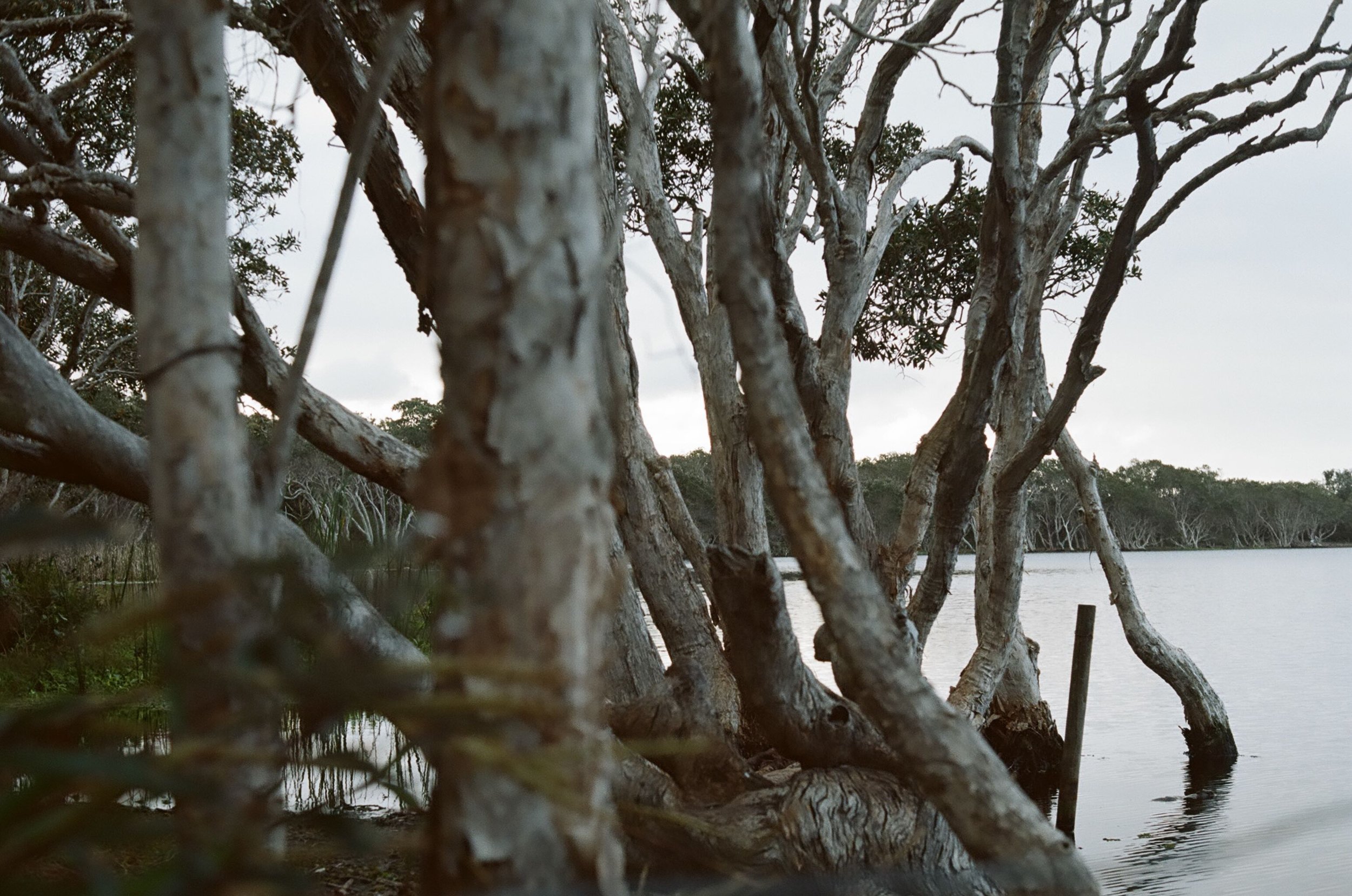Melaleuca paperbark or Tea Tree
By S Web
The other day I went to the Lake for a dawn swim. As the light stretched westward the grey melaleuca trunks lit up neon-white with the first rays of the sun.
Osprey and brahminy kites perched like sentinels on the melaleuca’s highest branches while the dawn chorus announced the new day. Peewees peeped, honey-eaters cackled, seagulls washed and preened as swallows swooped over the Lake surface. Cattle egrets roosting high on the outer branches of the melaleuca stretched and spread their wings. Plovers cack-cacked in a crazy, winged, lap of the Lake and ducks floated on dark, mirror-glass water.
Melaleuca, also called paperbark and tea–tree, has a long association with coastal waterways. It is the quintessential border plant around tea-tree lakes up and down the east coast of Australia.
Aboriginal people celebrated its myriad functional and medicinal uses and it remains a significant totemic tree today. It’s also a very important ‘womens’ business’ tree. The bark peels easily off the trunk and was used during menstruation and throughout childbirth. Around Lake Ainsworth it was revered because the Lake is a traditional birthing place.
Melaleuca trees flower profusely a few times each year from spring through to late autumn. Around here they have an especially heavy flowering in May/June. Their cream-coloured bottlebrush flowers litter the dark water and are an important food source for insects, birds and mammals. Many birds also roost and nest in the protective foliage and turtles love the platforms made by larger roots as a protected place to sun themselves.
Melaleuca’s medicinal, antibacterial and antifungal properties are well documented but from a practical, white fella point of view, in the early years of white settlement, its capacity to withstand inundation made it the perfect timber for fencing. In later years it was also used for oyster lease posts and in 1967 it was used along Seven Mile Beach to hold back an advancing ocean. Those posts are still in the sand today.
The name ‘tea-tree’ came about because sailors on the Endeavour used the leaves of melaleuca and similar plants as a substitute for black tea. A few melaleuca flowers added to a boiled billy also make a refreshing sweet drink. And it’s no coincidence that our coastal lakes are tea-coloured; tannins and oils leached from the leaves make it so.
I took a thermos of tea to the lake the other night to sit and ponder. The white melaleuca trunks turned grey as they surrendered light into reflections on the Lake. Birds settled to roost, the wind dropped and the lake surface became smooth and shiny like black satin. I cupped my tea, sipped and pondered some more; the old melaleuca trees were cupping their tea-tree Lake in the same way. How lucky we are to have all this wonderful nature on our doorstep.

